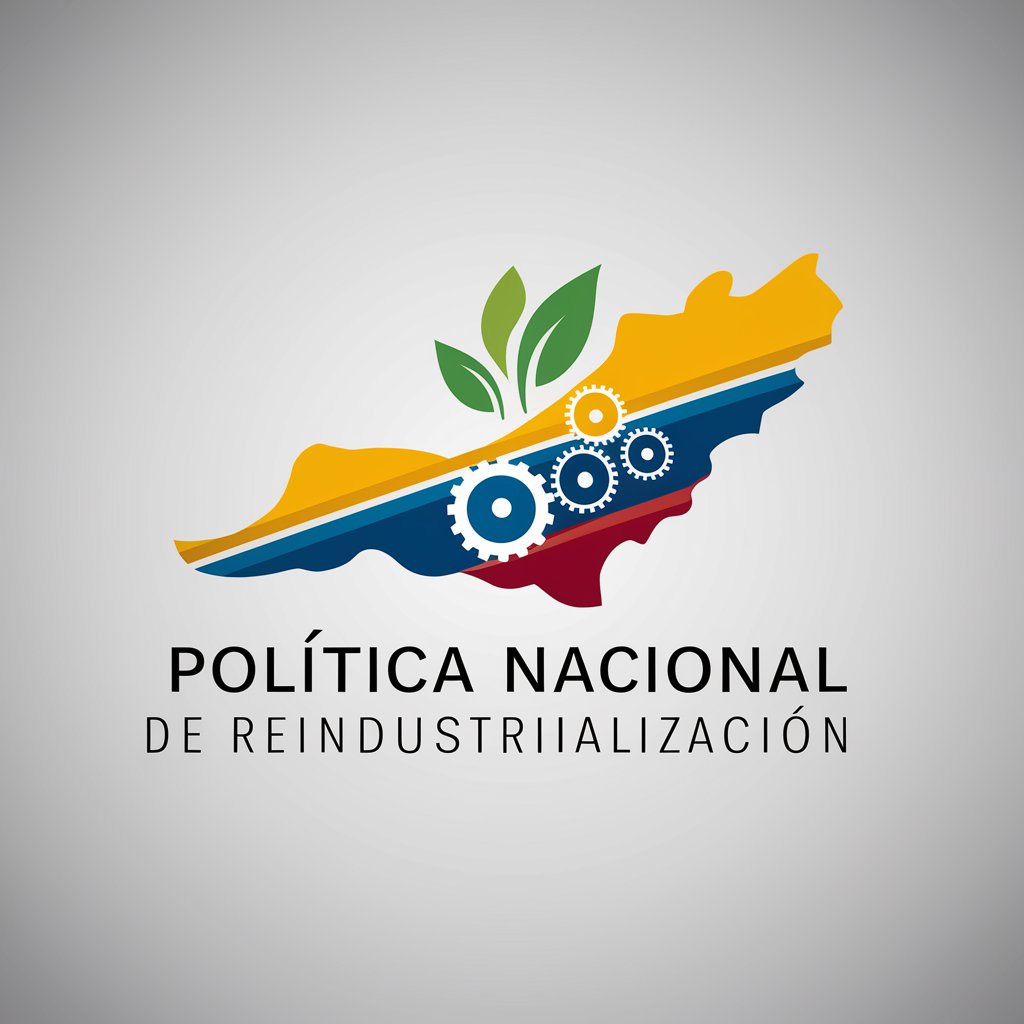Política Nacional de Reindustrialización - Guide to Reindustrialization Strategy

Welcome to insights on Colombia's reindustrialization!
Transforming industry through innovation and sustainability
Explain the key objectives of Colombia's reindustrialization policy.
Discuss the impact of technological innovation on Colombia's industrial sector.
Analyze the role of sustainability in Colombia's economic development plans.
Detail the strategies for improving productivity in Colombia's industrial sector.
Get Embed Code
Introduction to Política Nacional de Reindustrialización
The Política Nacional de Reindustrialización (National Policy for Reindustrialization) is envisioned as a transformative process for the productive sector of goods and services in Colombia, addressing challenges like climate change, rapid technological shifts, and changing geopolitical landscapes. It aims to generate higher value-added in the Colombian productive apparatus through a cross-cutting approach that includes territorial development and four strategic intersectoral bets: just energy transition, agro-industry and food sovereignty, reindustrialization based on the health sector, and reindustrialization from the defense sector for life. This policy represents a shift from traditional approaches by focusing on strategic, territory-based, and sector-specific interventions to drive sustainable, inclusive economic development. Powered by ChatGPT-4o。

Main Functions of Política Nacional de Reindustrialización
Closing productivity gaps
Example
Incorporating advanced technology, strengthening human talent through education and training, and optimizing physical and digital infrastructure.
Scenario
Enhancing the productivity of productive units by fostering innovation, access to capital and financing, and improving connectivity among regions and with international markets.
Diversifying and sophisticating the productive and export matrix
Example
Increasing the internal and exportable offer through the development of new and better goods and services.
Scenario
Promoting initiatives that facilitate the insertion into global supply chains, reducing export dependence and displacing national industry towards more sophisticated sectors.
Strengthening productive linkages
Example
Promoting productive agglomerations aligned with territorial vocations to add value and seek economies of scale.
Scenario
Implementing strategies that reinforce relationships within and between territories, enhancing urban-rural links and increasing participation in national, regional, and global value chains.
Deepening economic integration
Example
Optimizing instruments signed with commercial partners and attracting foreign direct investment that encourages reindustrialization.
Scenario
Focusing on knowledge and technology transfer to sophisticate and diversify the productive and exportable offer, integrating with developing regions and potential growth markets.
Improving the institutional framework and incentives for value addition
Example
Facilitating regulatory efficiency and quality that promote regulatory improvement and design incentives aligned with strategic development bets.
Scenario
Coordinating public and private sector efforts to enhance competitiveness, productivity, and innovation.
Ideal Users of Política Nacional de Reindustrialización Services
Government and policy makers
To design and implement policies for sustainable and inclusive economic development, focusing on strategic sectors and regional development.
Businesses and industries
Especially small and medium-sized enterprises (SMEs) in strategic sectors like agro-industry, health, and energy transition, to access support for innovation, technology adoption, and market expansion.
Academic and research institutions
To contribute to the development of human talent, innovation, and research in areas critical for reindustrialization and sustainable development.
Local communities and territories
To engage in productive projects that leverage territorial vocations, promoting local development and integration into broader economic dynamics.

Guidelines for Using the National Reindustrialization Policy
1
Start by exploring yeschat.ai for a complimentary trial, bypassing the need for any login or subscription to ChatGPT Plus.
2
Identify your sector's challenges and opportunities in the context of reindustrialization to understand how the policy can be applied.
3
Consult the policy document to align your business or research goals with the strategic priorities outlined, such as technology adoption, sustainability, or productivity enhancement.
4
Engage with local and national government bodies to leverage support, funding, and resources available for reindustrialization projects.
5
Implement the recommended actions within your organization or community, utilizing the policy as a roadmap for sustainable and innovative industrial development.
Try other advanced and practical GPTs
Tierra Tech
Empowering Innovation with AI

박찬호의 제가 LA에 있었을 때
Revive the Diamond Stories with AI

HR Consultant
AI-powered Canadian Employment Expert

Sarkari Naukari Guide
Empowering Your Government Job Quest with AI

あなたのWhyから始めましょう!
Discover Your Why with AI Guidance

Prepara Médico Tráfego
Empowering Traffic Medicine Mastery with AI

Metodologías
Empowering Insights with AI

Louisiana French Translator
Bringing Louisiana French to the Digital Age

Career Coach
Empowering Your Career Journey with AI

Retention Guru
Empower Your Pricing, Boost Retention

Career Coach
Empowering Your Career Path with AI

Career Matchmaker
Empowering Your Career Journey with AI

Q&A on National Reindustrialization Policy
What is the National Reindustrialization Policy?
It's a strategic framework aimed at transforming Colombia's productive sector to enhance value addition, foster sustainability, and embrace technological innovation, thereby addressing the challenges of climate change and global market dynamics.
What are the key strategic areas of the policy?
The policy focuses on several strategic areas including just energy transition, agribusiness and food sovereignty, health sector reindustrialization, and defense sector development, each aimed at diversifying and sophisticating the production matrix.
How does the policy propose to enhance productivity?
By closing productivity gaps through advanced technology adoption, strengthening human talent, enhancing financial instruments for production, and developing physical and digital infrastructure to support connectivity.
What role does innovation play in the policy?
Innovation is central to the policy, emphasizing R&D, the adoption of new technologies, and fostering an entrepreneurial ecosystem conducive to digital and technological advancements.
How is the policy expected to impact the economy?
It aims to transform the economy from being heavily reliant on extractive activities to a knowledge-based, productive, sustainable, and inclusive one, contributing to territorial development and productivity gap closure.
